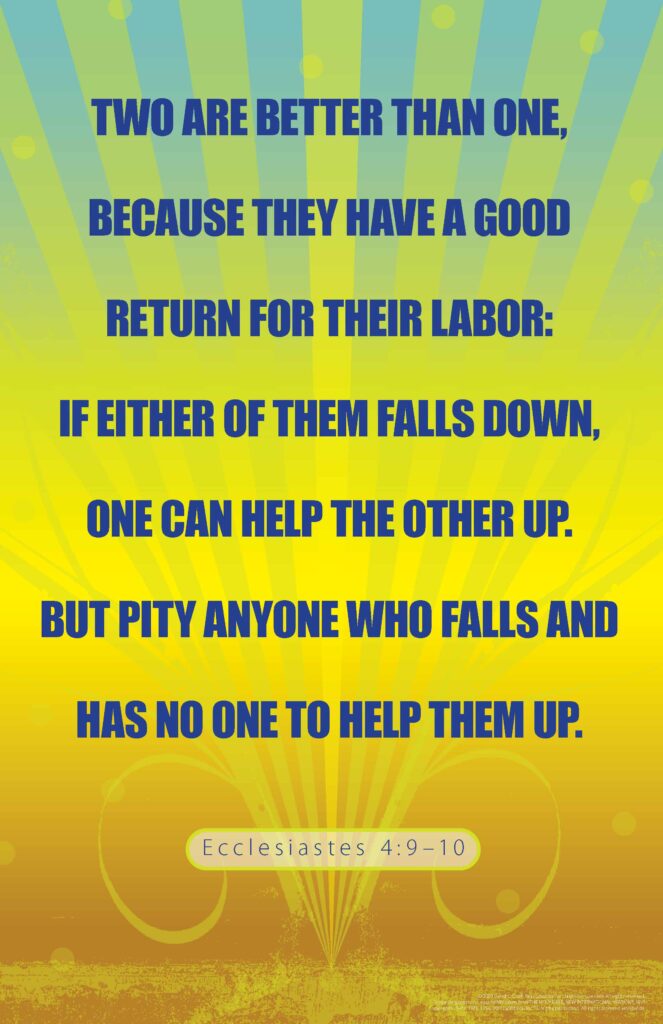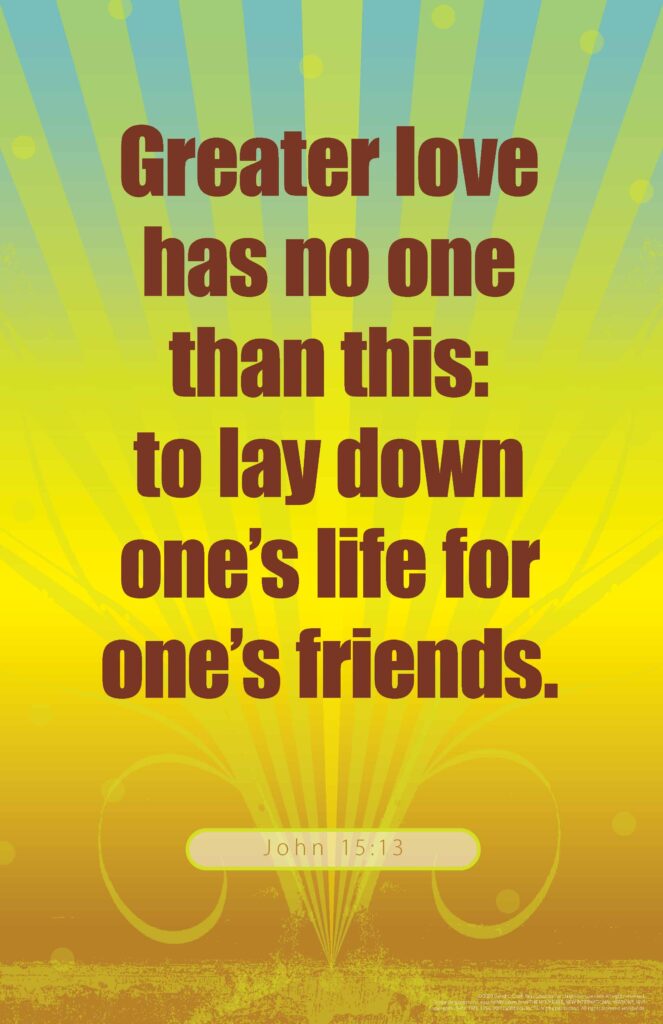During the lesson, the information for you to know is written in regular type, and what we suggest speaking or reading aloud to children is in bold. All resources for this lesson, including the Teacher Guide, Student Page, Family Connection Card, and other resources can be downloaded in a ZIP file by clicking on the following link:
In some lessons you will find "resource articles." These are articles written by experts from around the world to help equip you for your work with children and adolescents. Share them with parents or guardians if you consider it appropriate.
Unit Introduction: This unit is all about friendship. This topic is very important, especially for children who have faced trauma due to hard circumstances in life. These children may not know how to choose friends wisely. They may have difficulty trusting others. They also may not know how to be a good friend. These lessons will help them understand a little more about what the Bible says about friendship. At the end of the unit, they will hear how Jesus wants to be their Forever Friend.
Two are better than one, because they have a good return for their labour: If either of them falls down, one can help the other up. But pity anyone who falls and has no one to help them up.
Ecclesiastes 4:9–10
Two are better than one. Sometimes it may seem like it is easier to get things done when you work alone. But God’s Word is clear that two are better than one. Think of a time when you were working alone and someone came along to help you. How did that affect the work? How did it make you feel to have someone working alongside you?
Most of us enjoy spending time with friends. But if you are struggling with something, do you sometimes hesitate to ask for help? Maybe it is pride that keeps us from wanting to ask for help from a friend. Think of who you might ask to support you in this work of teaching the children. In what ways could that friend help you? Think of ways that you could also help that friend in what she is working on. Thank God for friends!
If you have a family meeting, share that the children will learn about friendships this month. Share that God is the one who created friendship in the first place and He wants to be their Friend as much as He wants to be their children’s Friend!
Teacher Tip: If possible, email or text the Family Connection Card to the families of your students.
Today we will learn about how to make friends. Let’s think about what qualities make a good friend. When you have an idea, stand up and when I point to you, share your idea.
Here are some qualities to mention if your children do not. A good friend…
There are many different types of friendship. You may have friends who are your age, in the same class at school, have similar interests, or come from similar family backgrounds.
You may also have friends who are older or younger, the opposite gender, or have different interests. For example, you may be good at sports and your friend may prefer to read books. But you both come from the same village and that is what your friendship is built on.
Sometimes friendships form right away. Other times, friendships can take a while to form. You may have 1–2 close friends or a large group of friends. You may see some friends every day, and you may not see others for a long time.
Some friendships last for just a while, and others last a lifetime. There are all types of friendships. Over your lifetime you may have many of these types of friendships. Some people find it easy to make friends. However, many people have to work hard to learn friendship skills. Pair up with another child and discuss your answers to the questions I ask.
We are going to talk about some tips for making friends.
Tip 1: Use confident body language. You can practice this in the mirror or with a friend. Be attentive to other people’s body language so you will know if they are open to talking with you.
Let’s see how good you are at figuring out body language. I will act out an emotion using only body language. When you think you know what my emotion is, jump up out of your seat. When I point to you, tell us the emotion. Then suggest times when someone might feel that emotion.
Use body language and facial expressions, but no sound, to act out an emotion. Allow the children to identify the emotion and state a reason someone might feel that emotion. For example, when you act angry, a child will identify the emotion and may suggest you could be angry if someone stole something from you. If you act sad, a child could suggest it is because someone lied to you. Act out 3 emotions before continuing with class.
Tip 2: Be positive. Offer a genuine compliment to start a conversation.
Children might suggest things like: You played that game well. I like your hairstyle. I like how you helped that younger child.
Tip 3: Show interest. Ask the other person about his interests and hobbies. Make sure your body language shows that you are interested.
Tip 4: Take turns talking. Do not take over the conversation, but listen to the other person. Ask questions, but be prepared to talk about your interests too.
Tip 5: Be friendly, kind, helpful, and welcoming. Look for those who are alone or new, and introduce yourself.
Tip 6: If you want to join a group, first observe and listen. When you begin to understand what is going on, ask to join. For example, if a group is playing a game, offer to keep score, or ask someone to take turns with you.
There are also some things you can choose not to do:
Post the Bible verses you wrote out or the Memory Verse posters around different areas of your space and read them aloud.
Did you know God is the one who thought of friendship? He tells us a lot about friendship in the Bible. Many of the ideas you came up with are also found in the Bible.
I will read 4 short stories about friends. After I read each story, I will read the 4 Bible verses that are in 4 different areas. When I say, “Go!” run to the area with the Bible verse that fits the story best.
Here is an example: I may read a verse that talks about friends telling the truth and read the verses. When I read a story about a verse in the front of our space, you would run to the front.
Read the following stories about friends. Pause after each story and read the 4 verses so the children can run to the verse they think applies. More than 1 verse may apply to a story.
Story 1: A boy named Allan had a friend named Naboth. These boys were always together. They went to school together. They ate meals together. They played games together.
One day Allan was kept after class, so Naboth was walking along the road alone. A younger boy tried to walk with Naboth because he was afraid of a bully along the way. Naboth yelled at the boy and chased him away, but the young boy kept coming back. Finally Naboth hit the boy and ran ahead.
After class, Allan had run hard to catch up with Naboth. Allan saw everything that happened. When he saw what Naboth did, he felt sad.
Later that night Naboth asked Allan why he was so quiet. Allan told Naboth he was wrong to hit and chase away the younger boy. He told Naboth that he should be nicer. Naboth felt really bad then. He promised to be more kind from then on.
Run to your verse!
Allow the children to run to the verse they think fits the story best. Ask 1–2 children why they chose that verse. Children may choose Proverbs 27:6, but there could be more than 1 right answer.
You can trust a friend who corrects you, but kisses from an enemy are nothing but lies.
Proverbs 27:6, CEV

Good friends speak the truth in love, even when it hurts.
Allow the children to return to the centre of the room before reading each story.
Story 2: Once there was a very wise teacher and a man came to tell the teacher some important news.
“I need to tell you something about your friend. Did you know that he—” the man said. But before the man could finish his sentence, the teacher held up his hand and said: “Stop! Before you tell me anything about my friend, let me ask you 3 questions. First, do you know that what you are going to tell me about my friend is true?”
“Well, not exactly, but—” the man began.
Again, the teacher stopped him. “Is what you are going to tell me something good about my friend?”
“No, not really. Actually it is something quite bad,” the man replied.
“Here is my third question for you. Is this information about my friend useful to him in anyway?” the teacher asked with a frown.
“No—no, it is not.” The man shook his head.
“Well, if the information you want to tell me about my friend is not true, good, or useful, why should I bother to listen to you?”
Run to your verse!
Allow the children to run to the verse they think fits the story best. Ask 1–2 children why they chose that verse. Then read the following verse:
Those who erase a sin by forgiving it show love. But those who talk about it come between close friends.
Proverbs 17:9, NIrV

This verse says that good friends do not listen to or repeat bad things about their friends.
Story 3: This is a true story from the Bible. A woman named Naomi moved with her family from Israel to Moab because there was a severe famine in Israel. One of Naomi’s sons married a woman from Moab named Ruth. After Naomi’s husband and both of her sons died, Naomi decided to move back to Israel, her homeland. Ruth loved Naomi so much that she went with her.
When they arrived in Israel, Naomi was too old and tired to work. Ruth was young and strong. So Ruth went and gathered food in a field behind the workers. While she was working, the owner of the field—a man named Boaz—saw her and admired her for working so hard to care for her mother-in-law Naomi. Later Naomi helped Ruth become the wife of Boaz. After Ruth married Boaz, he took care of both women.
Run to your verse!
Allow the children to run to the verse they think fits the story best. Ask 1–2 children why they chose that verse.
Two are better than one, because they have a good return for their labour: If either of them falls down, one can help the other up. But pity anyone who falls and has no one to help them up.
Ecclesiastes 4:9–10

Good friends strengthen and help each other. The friendship between Ruth and Naomi became famous throughout Israel.
Story 4: In this true story, the Philippines experienced major floods after a tropical storm hit the small island nation. A young man named Muelmar Magallanes saw what was happening. He tied a rope around his waist and then tied it around his 3 younger siblings and got them to safety. Once they were safe, Muelmar went back and helped his parents get to safety.
He was a strong swimmer and saw many stranded neighbours. So he helped neighbours who were stranded on their rooftops. He made trip after trip, saving more than 30 people. As he stood shivering after the last rescue, he heard a woman screaming as she and her baby were being swept away.
Muelmar did not hesitate even though he was very, very tired. He dove into the floodwaters once again. When he reached the woman and her baby, who were clinging to a foam box to stay afloat, he grabbed them and shoved them toward the shore where the neighbours helped them to safety. An exhausted Muelmar was washed away in the flood.
Run to your verse!
Allow the children to run to the verse they think fits the story best. Ask 1–2 children why they chose that verse.
Greater love has no one than this: to lay down one’s life for one’s friends.
John 15:13

Good friends help one another.
After the game is over, have the children sit down.
Today you had fun learning some skills to make friends. Remember, the very best way to make a friend is to be a friend. Here is something Jesus said that tells us how to be a good friend:
Do to others as you would have them do to you.
Luke 6:31
If you treat others the way you would like to be treated, you will be a good friend to them. Jesus wants you to be a friend to those who need one. Jesus said that when you help those who need a friend, you are really helping Him (Matthew 10:40; 18:5; 25:40).
Optional: If you are using the Student Pages, allow the children to do the fun maze about the memory verse.

Now I want you to close your eyes and think of someone who really needs a friend. Think of how you can be a friend to that person this week.
Spend a minute in silent prayer for that person. Then stop and listen for ways God may want you to reach out in friendship. Remember that what God says always matches what is in the Bible because it is His Word! For example, He might remind you that you saw someone standing alone. You might invite him to play ball with you and your friends. As you pray, raise your hand when you know how you are going to be a friend to someone this week.
Close class by praying this blessing over the children.
Blessing: May you know that God is your friend and that through Him you can be a friend to others.
Lead your children in worshipping our great God who gives us friends.
Life on Life ©2020 David C Cook. Reproducible for home or classroom use only. All other uses require written permission from David C Cook [email protected]. All rights reserved.